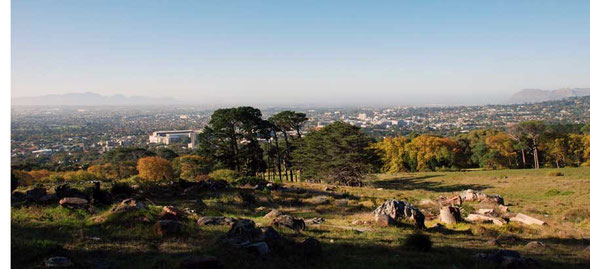The Zenith of British Imperialism 1870-1910
These notes mainly concern the Western Cape but the zenith of British Imperialism in South Africa surely deserves a mention.
What strikes me when reading Leonard Thompson's excellent A History of South Africa are the following:
Under British rule the expanded Cape Colony was absolutely rapacious in its determination to wrest the land of South Africa from its indigenous peoples. Cynical diplomacy backed by overwhelming military, organisational and technological might was used to gradually wrest nearly every scrap of land from the indigenous peoples in the process making them vassals to farmer, miner and industrialist alike.
From my fairly superficial reading this process does not appear to have been driven from London but had its own local dynamic over which London exercised a broad strategic and 'steadying' hand. This local dynamic was given international significance by the discovery of diamonds at Kimberley and gold in the Transvaal, which led to increasing white immigration.

It is hard to imagine now how absolute was the racist ideology of white supremacy that supported, legitimised and drove forward the rapine exercised on South Africa by the British colony and Afrikaner republics. For sure, there was concern over slavery and the ending of the slave trade was undoubtedly a good and honourable achievement. But this in no way challenaged, and nor was intended to, the notion of white superiority and rightfulness in relieving the 'godless natives' of their land, their dignity and their livelihood.
For Thompson perhaps the most fateful process of this period was 'the struggle that led to the racial structure of preindustrial, colonial South Africa being applied in the mining industries. [...] A precedent was thus established for structuring industry on racial lines throughout the region' p.112.
Thus white workers got the skilled and well paid jobs while black workers got the arduous, unskilled and dangerous work, confinement in all-male hostel accomodation, dislocation from family life with a huge burden being carried by women 'back home', exposure to pneumonia and smallpox and a mortality rate that reached 8% in the late 1870s and an eigth of the white worker's wage. When diamond diggers in 1872 attempted to eliminate black diggers and make them liable to be searched without a warrant the British response was indicative:

The British officials declined to endorse such overtly racial tactics, but the high commissioner issued proclomations that had much the same effect [...] These proclomations were intended to appease the antislavery lobby in Britain. Colour-blind in form, in practice they applied exclusively to blacks and divided ownership and production of diamonds by colour.
Thompson, p.118.
Despite all this the indigenous population of South Africa survived and despite campaigns of genocide in South West Africa (Namibia) and the Congo the great difference between the outcome of conquest of the indigenous peoples of North America and Southern Africa was that,
In spite of their losses [...] and the wars of conquest, Africans continued to constitue a vast majority of the population of the entire region, and every part of it east of the twenty-inch rainfall line.
Thompson, p.130
|
Descendants of indigenous inhabitants as percentage of total population 2008 |
|
|
USA |
1.5% |
|
Canada |
2 |
|
Brazil |
0.4 |
|
Australia |
2.4 |
|
New Zealand |
14.6 |
|
South Africa |
75 |
|
Source: Dowden 2009 Africa p.392 |
|
Update Feb 2013
In February 2013 the Financial Times commented on the Marikana unrest in the platinum mines that led tothe police shooting dead of 34 striking miners,
At the root of the unrest was the same racially based system of cheap, migrant labour that [Cecil] Rhodes pioneered at Kimberley in the 19th century. This has stubbornly survived attempts to improve workers' conditions and left South Africa's labour-intensive mines exposed as technology improves productivity elsewhere' (see FT 18th February 2013).
The same day the FT reported that nine employees were injured when rubber bullets were fired by Anglo American Platinum security personnel, and that three security staff were injured in the same incident after the company announced that it may close two mines with the loss of 14,000 jobs. The unrest appears to have been aimed at the once dominant National Union of Mineworkers (NUM) that has been outflanked by the more militant Association of Mineworkers and Construction Union (Amcu) (see FT 18th February 2013).

